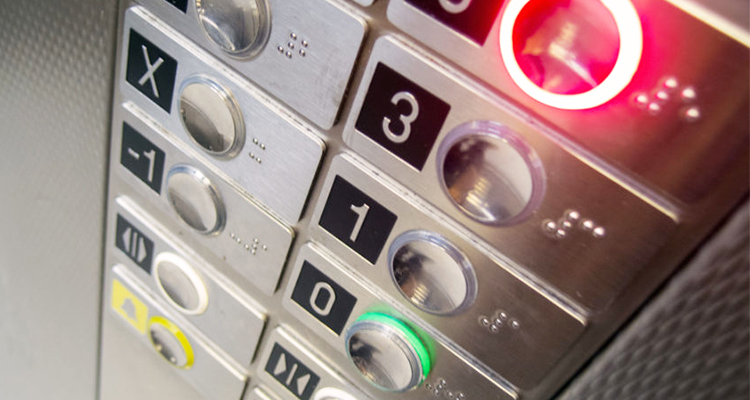Editor’s note: Gone are the days when elevator operators called out “Going up,” but some interesting elevators still exist in Wheeling with fascinating features. In Part 1, we learned a little history and read about three of Wheeling’s elevators. Part 2 of “Extreme Elevators” takes a look at a few more of Wheeling’s “Ups and Downs.”
BERRY BUILDING ELEVATOR, 1230 WATER ST.
The Berry family began a rope-making business in a shed at the bottom of 12th Street in 1824. The location was ideally situated near the river wharf where their customers docked their boats. Eventually, Berry Supply moved from that shed to its location at 1230 Water St. As riverboats started to become obsolete and rope sales fell off, the business began selling plumbing and heating supplies.
The Berrys sold the building and the business to G. A. Barrett in 1945. Barrett and four other investors formed the corporation that grew the business into Berry Supply, the well-known kitchen and bathroom cabinetry and fixture company that many of us remember. Barrett’s granddaughter Sue Smith and her husband Tom helped show Weelunk around the building, which was recently purchased by developer Dan Milleson and his family.
The Smiths believe the existing antique electric freight elevator was installed sometime in the early 1940s, making it nearly 80 years old. The portal at the front of the elevator at ground level looks like it could have been fashioned from the doors of an old safe. And perhaps that’s not out of the question.
“Workers in the building built the elevator out of spare pieces and parts,” Tom Smith shares. Tom worked at Berry Supply from 1984 until the business ceased operations last year. At the time of Berry Supply’s closure, it was Wheeling’s oldest business.
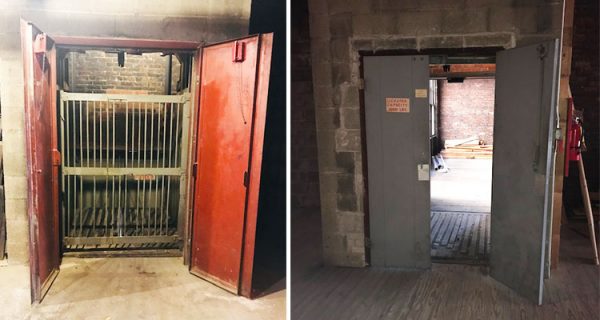
The Berry Building elevator utilizes a number of heavy stone counter-weights that riders can see as the car crawls vertically up and down the elevator shaft. The car is manually operated and has a maximum capacity of 2,000 pounds.
Inside the metal outer doors is a steel cage door that is pulled down into place before the elevator moves. Like some of the other vintage elevators around town, this one won’t move in either direction unless the doors are securely latched.
Tom Smith shares that for many years, an older gentleman named Bernie McCluskey would come to the building to inspect and service the elevator for the modest sum of $25 per month. Tom says he knew Bernie for quite a while before Tom learned that his wife’s father had earned a bronze star during World War II for saving Bernie’s life.
According to Tom, this particular elevator was “grandfathered in” and declared exempt from the West Virginia Division of Labor’s five-year full load testing. This was because modern methods of load testing would severely damage the wooden framework inside the ancient elevator shaft.
Milleson and the Smiths shared with Weelunk the original schematic drawings of the electrical and mechanical workings of this old-fashioned elevator, which were fascinating to see.
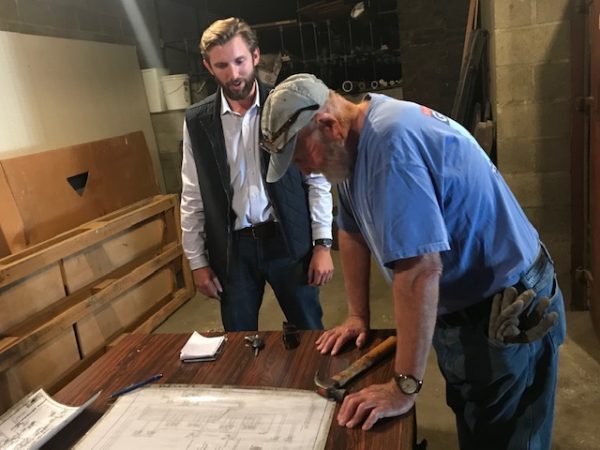
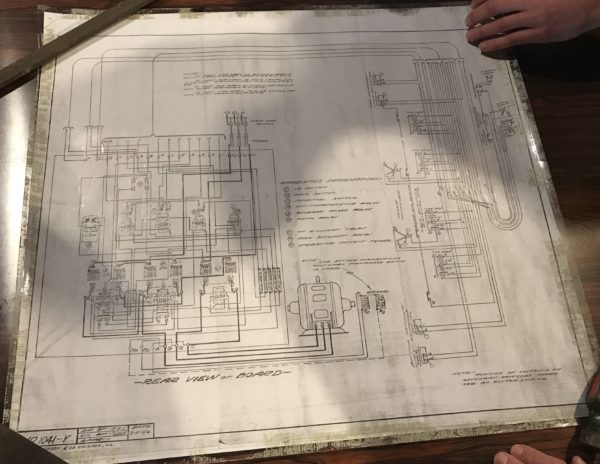
As the building’s new owner, Milleson is clearly intrigued by the history of both the building and the elevator. He is in the planning stages of developing the property and wants to begin by upgrading the exterior “envelope” of the building in the coming months. Milleson would like to maintain as much historical integrity as possible as he makes renovations to the building.
ORRICK ELEVATOR, 2121 MAIN ST.
International law firm Orrick, Herrington & Sutcliffe has occupied the former Wheeling Stamping facility at 2121 Main St. since 2002.
In 2001, the building was renovated and upgraded to house the firm’s innovative Global Operations Center.
“There were no elevators in the building at that point,” reveals Will Turani, Orrick director of administration. Orrick worked with the Regional Economic Development Partnership under the leadership of RED Program Manager Craig O’Leary to develop the property using Brownfield Economic Development Initiative funds and Historic Rehabilitation Tax Credits. O’Leary says that the elevator shaft was cut out of the existing four floors of the historic building to accommodate the exposed steel glass-backed elevator car.
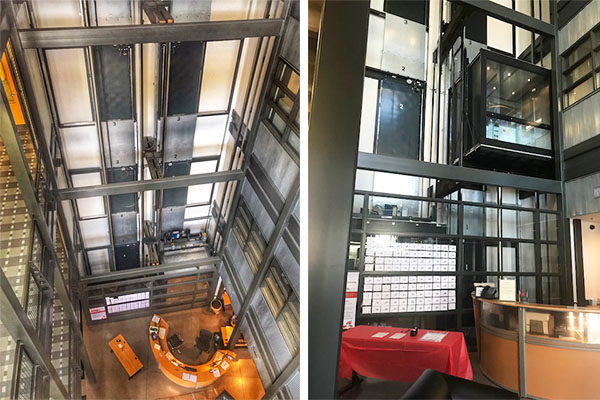
Mike Boone of Walters Construction was the project manager for the building’s renovations. He shares that the contractor had to dig more than four stories below ground level to create the pit for the unique elevator.
“Because the elevator is so exposed, it doesn’t run on standard track like most modern elevators,” Boone says. In addition to the glass passenger elevator, a more common cable-driven service elevator was also installed during the remodeling project.
BLUST HOME RESIDENTIAL ELEVETTE, HIGHLAND PARK
Julie and Raymond Blust and their family have lived in their Highland Park home for nearly 20 years. Built between 1899 and 1904, the lovely old home is one of many in the neighborhood on the National Historic Registry.
The house boasts many charming features, but the family was most astonished to learn about the elevator, which had not been mentioned at all as a selling point.
“When we first moved into the house, we opened the door, and there was a vacuum cleaner sitting inside,” Julie shares.
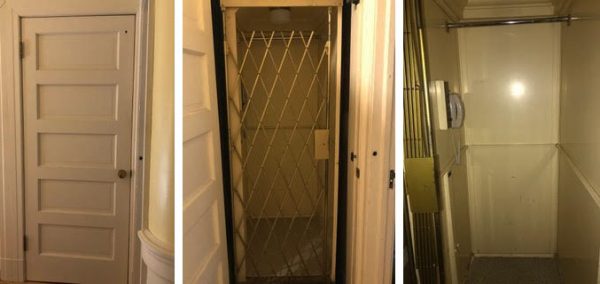
Although the family knew they’d stumbled upon an elevator, the sweeper stored inside made them think the tiny home “elevette” probably wasn’t in working order. But much to the family’s surprise, the elevette was indeed still functional. They later learned that a former owner named Mrs. Caldwell (one of only five total owners in the home’s 120-year existence!) had the elevette installed when she became confined to a wheelchair in her later years. The car was installed in what used to be a back staircase of the home and runs from the basement to the third floor.
The Blusts continue to have the elevette maintained and serviced, although they only use it occasionally. It moves with the push of a button, although it does not require someone riding inside the car to operate it. As a safety feature, Julie says the elevette’s door won’t open on any particular floor unless the car is there to block the open shaft.
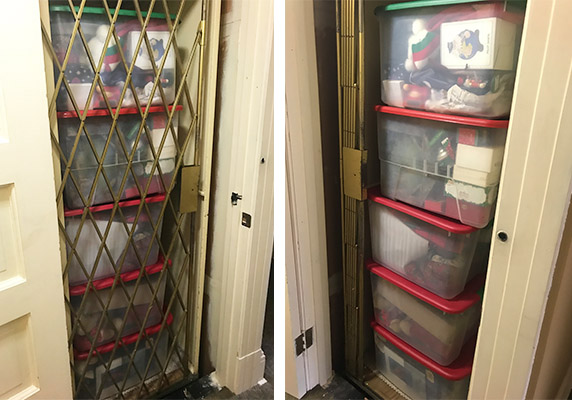
The next time you’re in a local building, remember to take special note of its elevator, even if you’re in the habit of taking the stairs — you just might be in for a historical surprise!
• A lifelong Wheeling resident, Ellen Brafford McCroskey is a proud graduate of Wheeling Park High School and the former Wheeling Jesuit College. By day, she works for an international law firm; by night, (and often on her lunch breaks and weekends) she enjoys moonlighting as a part-time writer. Please note that the views expressed in her writing are solely her own and do not necessarily reflect those of anyone else, including her full-time employer. Through her writing, Ellen aims to enlighten others on causes close to her heart, particularly addiction, recovery and equal rights. She and her husband Doug reside in Warwood with their clowder of rescued cats, each of whom is a direct consequence of his job as the Ohio County Dog Warden. Their family includes four adult children, their spouses and several grandkids.


